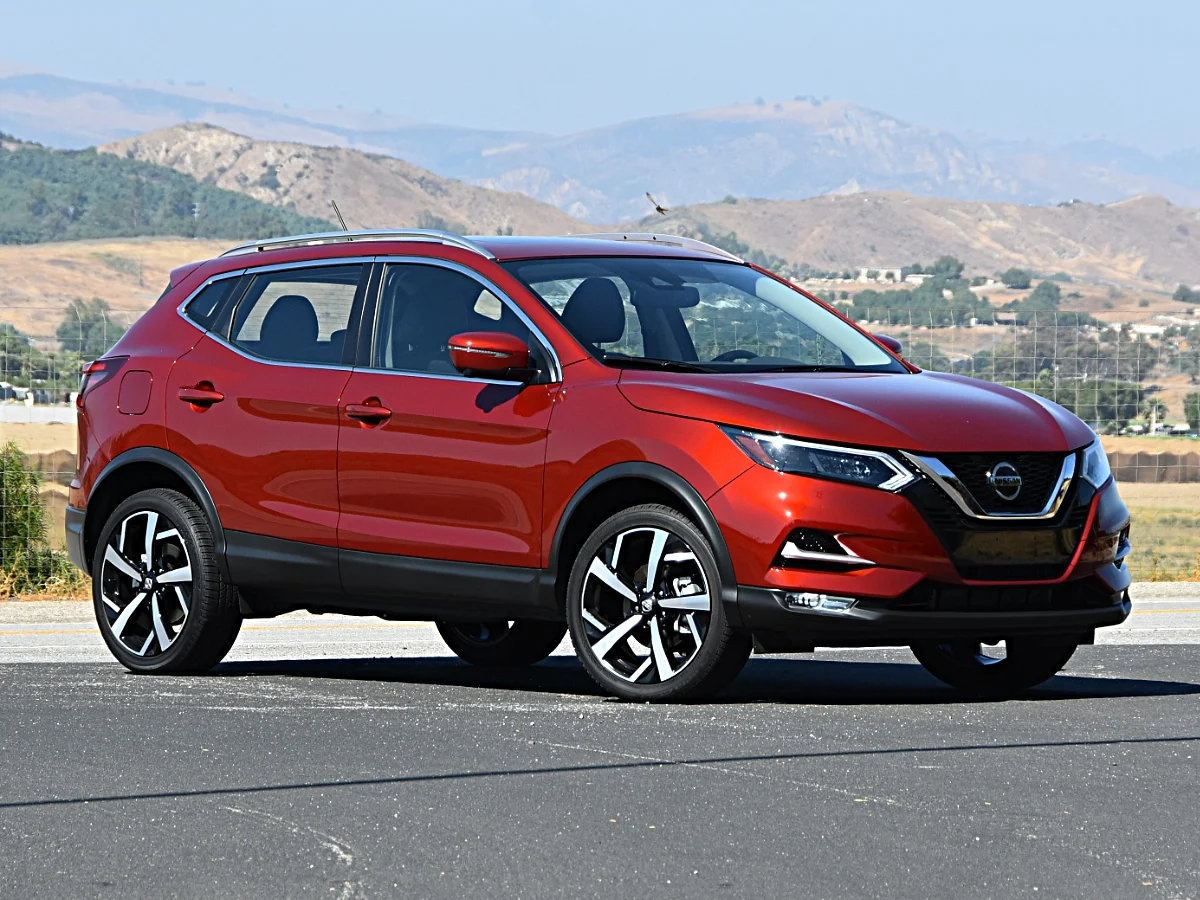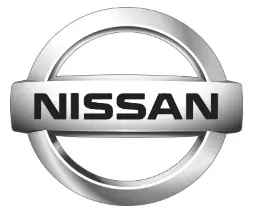Nissan Rogue Sport 2021
The Nissan Rogue Sport is a compact SUV designed to offer a balance of style, versatility, and practicality. As of my knowledge cutoff in September 2021, the Nissan Rogue Sport 2021 model had been introduced. Here’s an overview of the Rogue Sport for the 2021 model year:
Exterior: The 2021 Rogue Sport features a sleek and modern exterior design with Nissan’s signature V-Motion grille, LED headlights, and a sculpted body. It has a compact size, making it well-suited for urban driving and maneuverability.
Powertrain: The 2021 Rogue Sport typically comes equipped with a 2.0-liter four-cylinder engine, delivering around 141 horsepower. This engine is paired with a continuously variable transmission (CVT), providing smooth acceleration and optimized fuel efficiency. Front-wheel drive is standard, and all-wheel drive is often available as an option for enhanced traction.
Interior: Inside the cabin, the 2021 Rogue Sport offers comfortable seating for up to five passengers. The interior design focuses on a balance of functionality and comfort. Depending on the trim level and options chosen, features may include a touchscreen infotainment system, smartphone integration (such as Apple CarPlay and Android Auto), Bluetooth connectivity, USB ports, keyless entry and ignition, and available driver-assistance technologies.
Safety and Technology: The 2021 Rogue Sport often comes equipped with various safety features and driver-assistance technologies. These may include blind-spot monitoring, rear cross-traffic alert, forward collision warning with automatic emergency braking, lane departure warning, and adaptive cruise control. The specific features and availability may vary depending on the trim level and options selected.
For the most up-to-date and detailed information about the Nissan Rogue Sport 2021, I recommend visiting the official Nissan website or contacting a local Nissan dealership. They will be able to provide you with the latest specifications, features, and pricing details.
HILL START ASSIST SYSTEM
WARNING
- Never rely solely on the hill start assist system to prevent the vehicle from moving backward on a hill. Always drive carefully and attentively. Depress the brake pedal when the vehicle is stopped on a steep hill. Be especially careful when stopped on a hill on frozen or muddy roads. Failure to prevent the vehicle from rolling backward may result in a loss of control of the vehicle and possible serious injury or death.
- The hill start assist system is not designed to hold the vehicle at a standstill on a hill. Depress the brake pedal when the vehicle is stopped on a steep hill. Failure to do so may cause the vehicle to roll backward and may result in a collision or serious personal injury.
- The hill start assist system may not prevent the vehicle from rolling backward on a hill under all loads or road conditions. Always be prepared to depress the brake pedal to prevent the vehicle from rolling backward. Failure to do so may result in a collision or serious personal injury.
The hill start assist system automatically keeps the brakes applied to help prevent the vehicle from rolling backward in the time it takes the driver to release the brake pedal and apply the accelerator when the vehicle is stopped on a hill.
The hill start assist system will operate automatically under the following conditions:
- The transmission is shifted to a forward or reverse gear.
- The vehicle is stopped completely on a hill by applying the brake.
The maximum holding time is 2 seconds. After 2 seconds the vehicle will begin to roll back and the hill starts assist system will stop operating completely.
The hill start assist system will not operate when the transmission is shifted to the N (Neutral) or P (Park) position (CVT models) or on a flat and level road.
When the Vehicle Dynamic Control (VDC) warning light illuminates in the meter, the hill start assist system will not operate.(See “Vehicle Dynamic Control (VDC) warning light” (P.2-17).)
REAR SONAR SYSTEM (RSS)
The RSS sounds a tone to inform the driver of obstacles near the rear bumper.
When the “Display” key is on, the sonar view will automatically appear in the touchscreen display. An additional view of the sonar status will appear in the vehicle information display for reference.
WARNING
- The RSS is a convenience but it is not a substitute for proper parking.
- The driver is always responsible for safety during parking and other maneuvers. Always look around and check that it is safe to do so before parking.
- Read and understand the limitations of the RSS as contained in this section. The colors of the sonar indicator and the distance guidelines in the rearview indicate different distances to the object.
- Inclement weather or ultrasonic sources such as an automatic car wash, a truck’s compressed-air brakes or a pneumatic drill may affect the function of the system; this may include reduced performance or a false activation.
- The RSS is designed as an aid to the driver in detecting large stationary objects to help avoid damaging the vehicle.
- The RSS is not designed to pre- vent contact with small or moving objects. Always move slowly. The system will not detect small objects below the bumper, and may not detect objects close to the bumper or on the ground.
- The RSS may not detect the following objects: fluffy objects such as snow, cloth, cotton, glass, wool, etc.; thin objects such as rope, wire and chain, etc.; or wedge-shaped objects.
If your vehicle sustains damage to the bumper fascia, leaving it misaligned or bent, the sensing zone may be altered causing inaccurate measurement of obstacles or false alarms.
CAUTION
- Excessive noise (such as audio system volume or an open vehicle window) will interfere with the tone and it may not be heard.
- Keep the sonar sensors (located on the rear bumper fascia) free from snow, ice and large accumulations of dirt. Do not clean the sensors with sharp objects. If the sensors are covered, the accuracy of the sonar function will be diminished.
HOW TO ENABLE/DISABLE THE RSS
The system is automatically activated when the ignition switch is in the ON position and the shift lever is in the R (Reverse) position.
Perform the following steps to enable or disable the RSS:
- Press the button until “Settings” appears in the vehicle information display and then press OK button. Use the button to select “Driver Assistance.” Then press the OK button.
- Select “Parking Aids” and press the OK button
- Select “Rear Sensor” and press the OK button to turn the system on or off. . Select “Display” to display the rear sensor in the vehicle information
- display when the RSS activates.
- Select “Range” to change the RSS distance to “Far,” “Mid,” or “Near.”
RSS LIMITATIONS
WARNING
Listed below are the RSS limitations for the sonar system. Failure to operate the vehicle in accordance with these system limitations could result in serious injury or death.
Read and understand the limitations of the RSS as contained in this section. Inclement weather may affect the function of the RSS; this may include reduced performance or a false activation.
- Read and understand the limitations of the RSS as contained in this section. Inclement weather may affect the function of the RSS; this may include reduced performance or a false activation.
- The system is deactivated at speeds above 6 MPH (10 km/h). It is reactivated at lower speeds.
- Inclement weather or ultrasonic sources such as an automatic car wash, a truck’s compressed-air brakes or a pneumatic drill may affect the function of the RSS; this may include reduced performance or a false activation.
- The RSS is not designed to prevent contact with small or moving objects. Always move slowly. The system will not detect small objects below the bumper or on the ground.
- The RSS may not detect the following objects: fluffy objects such as snow, cloth, cotton, glass wool, etc.; thin objects such as rope, wire and chain, etc.; or wedge-shaped objects.
- The RSS may not detect objects at speeds above 3 MPH (5 km/h) and may not detect certain angular or moving objects.
SYSTEM TEMPORARILY UNAVAILABLE
When sonar blockage is detected, the system will be deactivated automatically.
The system is not available until the conditions no longer exist.
The sonar sensors may be blocked by temporary ambient conditions such as splashing water, mist or fog. The blocked condition may also be caused by objects such as ice, frost or dirt obstructing the sonar sensors.
Action to take:
When the above conditions no longer exist, the system will resume automatically.
SYSTEM MAINTENANCE
The sonar sensors are located on the rear bumper. Always keep the area near the sonar sensors clean.
The sonar sensors may be blocked by temporary ambient conditions such as splashing water, mist or fog.
The blocked condition may also be caused by objects such as ice, frost or dirt obstructing the sonar sensors.
Check for and remove objects obstructing the area around the sonar sensors.
Do not attach stickers (including transparent material), install accessories or apply additional paint near the sonar sensors.
Do not strike or damage the area around the sonar sensors. It is recommended that you visit a NISSAN dealer if the area around the sonar sensors is damaged due to a collision.
COLD WEATHER DRIVING
FREEING A FROZEN DOOR LOCK
To prevent a door lock from freezing, apply a deicer through the keyhole. If the lock becomes frozen, heat the key before inserting it into the keyhole, or use the Intelligent Key system or the remote keyless entry key fob.
ANTI-FREEZE
In the winter when it is anticipated that the outside temperature will drop below 32°F (0°C), check the anti-freeze to assure proper winter protection. For additional information, see “Engine cooling system” (P.8-4).
BATTERY
If the battery is not fully charged during extremely cold weather conditions, the battery fluid may freeze and damage the battery. To maintain maximum efficiency, the battery should be checked regularly. For additional information, see “Battery” (P.8-11).
DRAINING OF COOLANT WATER
If the vehicle is to be left outside without anti-freeze, drain the cooling system, including the engine block. Refill before operating the vehicle.
For details, see “Engine cooling system” (P.8-4).
2022 Nissan Rogue Specs, Price, Features and Mileage (Brochure)
2023 Nissan Rogue Specs, Price, Features and Mileage (Brochure)
Reference Link
Download Manuals: https://www.nissanusa.com/owners/ownership/manuals-guides.html


